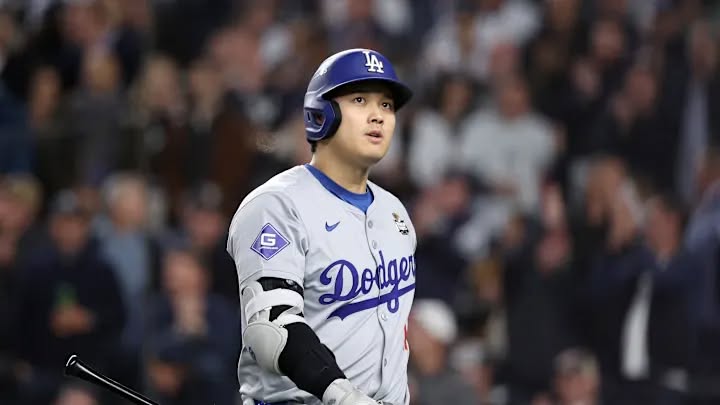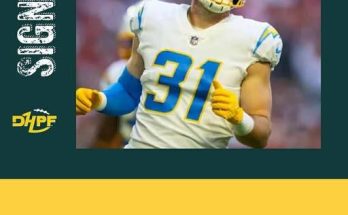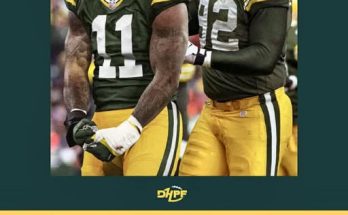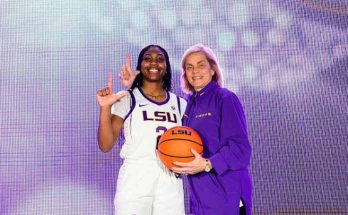The Los Angeles Dodgers entered the 2024 season with sky-high expectations, bolstered by the historic signing of two-way superstar Shohei Ohtani. Alongside fellow acquisitions like Yoshinobu Yamamoto and Tyler Glasnow, the Dodgers were widely viewed as the team to beat not just in the National League West, but in all of baseball. However, as the season has unfolded, injuries, inconsistencies, and a surprisingly competitive division have cast doubt over their presumed dominance. Now, with Ohtani sidelined due to an elbow injury that will prevent him from pitching for the remainder of the year—though he continues to hit—the Dodgers’ path to October has grown even more complicated.
Ohtani’s injury is just the latest in a string of setbacks for a team that was built to withstand adversity but is now facing a critical juncture. The Dodgers’ pitching staff, already thin due to injuries to Walker Buehler, Dustin May, and Tony Gonsolin, now must navigate the rest of the season without Ohtani’s elite arm in the rotation. While he remains a force at the plate, his absence on the mound leaves a gaping hole in a rotation that was counting on him to be a frontline starter. The Dodgers’ depth is being tested like never before, and with the San Diego Padres, San Francisco Giants, and even the Arizona Diamondbacks refusing to fade in the NL West race, Los Angeles can no longer rely on sheer talent alone to carry them through.
The uncertainty in the division is compounded by the broader National League playoff picture, which has become increasingly crowded. The Atlanta Braves and Philadelphia Phillies have established themselves as powerhouses in the East, while the Milwaukee Brewers and Chicago Cubs are locked in a tight battle in the Central. Even the wild-card race is far from settled, with multiple teams—including the Padres, Giants, and Cincinnati Reds—jockeying for position. The Dodgers, once considered a near-lock for a top seed, now find themselves in a dogfight just to secure a playoff berth, let alone a division title.
Ohtani’s injury is particularly devastating because of his unparalleled value. As a pitcher, he posted a 2.76 ERA with 132 strikeouts in 107 innings before being shut down. As a hitter, he remains one of the most dangerous sluggers in the game, batting .304 with 28 home runs and 72 RBIs. But the Dodgers didn’t sign him to be just a designated hitter—they signed him to be a dual threat, a game-changer who could dominate on both sides of the ball. Without his pitching, the burden falls even heavier on an already overworked rotation. Yamamoto, while talented, has had his ups and downs in his first MLB season. Glasnow has been solid but has a lengthy injury history of his own. Behind them, the Dodgers are relying on unproven arms and veteran reclamation projects, a far cry from the dominant staff they envisioned.
The offense, while still potent, has also shown vulnerabilities. Mookie Betts and Freddie Freeman remain elite, but beyond them and Ohtani, the lineup has been inconsistent. Max Muncy has battled injuries, Chris Taylor has struggled mightily, and the bottom of the order has often been a black hole. The Dodgers’ front office, known for its aggressive midseason moves, will almost certainly look to add reinforcements before the trade deadline. But with farm system depth already depleted from previous deals, they may have to get creative—or settle for lesser upgrades.
Meanwhile, the competition in the NL West isn’t making things any easier. The Padres, despite their own inconsistencies, boast a star-studded lineup featuring Fernando Tatis Jr., Manny Machado, and Juan Soto. Their rotation, led by Dylan Cease and Yu Darvish, has the potential to be dominant. The Giants, always a thorn in the Dodgers’ side, have pieced together a scrappy, well-rounded team with surprising contributions from under-the-radar players. And the Diamondbacks, last year’s NL pennant winners, still have the speed and pitching to make a second-half surge. The margin for error in the division is razor-thin, and the Dodgers no longer have the luxury of waiting for their injured stars to return.
The broader National League landscape only adds to the pressure. The Braves, even without Spencer Strider, have a loaded lineup and a deep rotation. The Phillies, led by Bryce Harper and Zack Wheeler, look every bit like a World Series contender. In the Central, the Brewers and Cubs are both built to win now, with strong pitching and balanced lineups. The wild-card race could easily feature 85-plus-win teams being left out, meaning every game the Dodgers lose without Ohtani on the mound could come back to haunt them in September.
For manager Dave Roberts, the challenge is clear: keep the team afloat until reinforcements arrive, whether via trade or returning players. But Roberts has also faced criticism in past seasons for his bullpen management and in-game decisions, and with the stakes this high, every move will be scrutinized. The Dodgers’ front office, led by Andrew Friedman, has a history of making bold moves at the deadline, but this year’s circumstances are particularly tricky. Do they go all-in for another arm, even if it means further depleting the farm system? Or do they trust the current group to figure things out, hoping that health and regression work in their favor?
One thing is certain: the Dodgers can no longer take anything for granted. Ohtani’s injury is a brutal reminder of how quickly a season can change, and in a division as competitive as the NL West, there’s no room for complacency. The playoffs are still within reach, but the path just got a lot harder. If the Dodgers are going to live up to their preseason hype, they’ll need more than just star power—they’ll need resilience, adaptability, and maybe a little luck. Otherwise, what was supposed to be a dream season could turn into a nightmare.
As the trade deadline approaches and the playoff race heats up, the Dodgers’ response to this adversity will define their season. Ohtani’s injury is a major blow, but it doesn’t have to be a death sentence.



